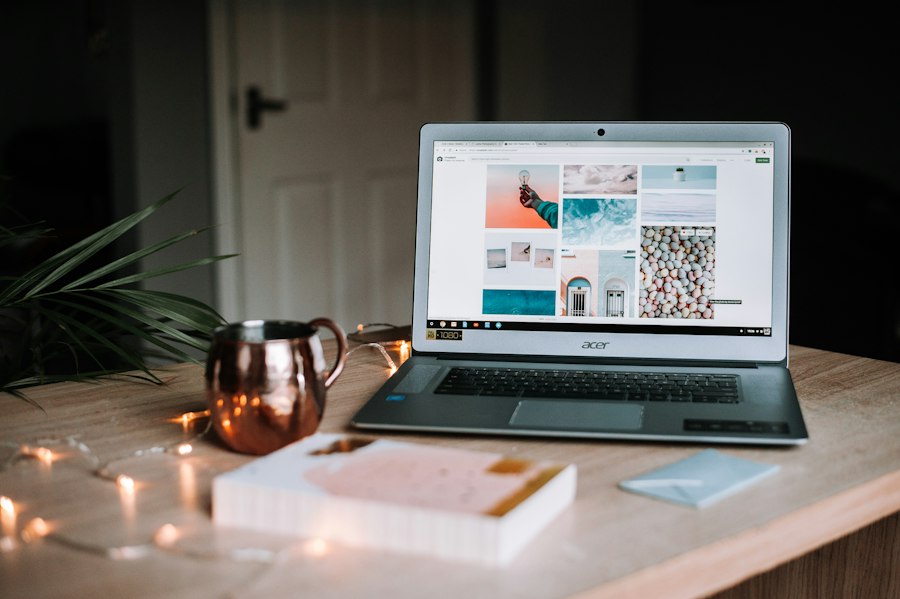In today’s digital age, our smartphones have become an essential part of our lives. They hold our contacts, photos, videos, and important documents. However, there may be times when you need to transfer files between your phone and laptop. Whether it’s for backup purposes, sharing files with colleagues, or simply organizing your data, connecting your phone to your laptop can be incredibly useful.
There are several benefits to connecting your phone to your laptop. Firstly, it allows for easy file transfer between the two devices. You can quickly and conveniently transfer photos, videos, documents, and other files without the need for cloud storage or email attachments. Secondly, connecting your phone to your laptop enables you to access and manage your phone’s data directly from your computer. This can be particularly helpful when you need to organize or edit large amounts of data. Lastly, connecting your phone to your laptop opens up a world of possibilities for productivity and convenience. You can use your laptop’s larger screen and keyboard to work on documents or reply to messages more efficiently.
There are different ways to connect your phone to your laptop, depending on the make and model of both devices. The most common method is through a USB cable. This allows for a direct physical connection between the two devices. Another option is using an adapter, such as a USB-C to USB-A adapter or a Lightning to USB adapter, depending on the ports available on your phone and laptop. Additionally, some laptops and phones support wireless connectivity options like Bluetooth or Wi-Fi Direct, which can be used for file transfer without the need for cables.
Key Takeaways
- Connecting your phone to your laptop allows for seamless integration and file transfer.
- Choosing the right cable or adapter is crucial for a successful connection.
- Enabling USB debugging on your phone is necessary for file transfer.
- Setting up your phone for file transfer and transferring files between your phone and laptop is easy with the right steps.
- Troubleshooting common connection issues and optimizing your phone-laptop connection can improve your experience.
Step 1: Choosing the Right Cable or Adapter
Before you can connect your phone to your laptop, you need to ensure that you have the right cable or adapter for the job. The type of cable or adapter you need will depend on the ports available on both your phone and laptop.
For Android phones, the most common type of cable is a USB-A to USB-C cable. This is because most modern Android phones use USB-C ports for charging and data transfer. However, if you have an older Android phone with a micro-USB port, you will need a USB-A to micro-USB cable instead. On the other hand, if you have an iPhone, you will need a Lightning to USB cable.
If your laptop does not have a USB-C port, you may need an adapter to connect your phone. For example, if your laptop has a USB-A port and your phone has a USB-C port, you will need a USB-C to USB-A adapter. Similarly, if your laptop has a Thunderbolt 3 port and your phone has a Lightning port, you will need a Thunderbolt 3 to Lightning adapter.
When choosing a cable or adapter, it’s important to consider the quality and durability of the product. Cheap cables or adapters may not provide reliable connections or may break easily. It’s worth investing in high-quality cables or adapters from reputable brands to ensure a stable and long-lasting connection between your phone and laptop.
Step 2: Enabling USB Debugging on Your Phone
Before you can connect your phone to your laptop, you may need to enable USB debugging on your phone. USB debugging is a feature that allows your phone to communicate with your computer over a USB connection. It is primarily used by developers for testing and debugging applications, but it can also be useful for file transfer and other tasks.
To enable USB debugging on an Android phone, you first need to enable Developer options. To do this, go to the Settings app on your phone and scroll down to About phone. Tap on About phone and then find the Build number entry. Tap on Build number seven times in quick succession to unlock Developer options.
Once Developer options are enabled, go back to the main Settings menu and scroll down to find Developer options. Tap on Developer options and then toggle the USB debugging option to enable it. You may also need to confirm the connection on your phone when you connect it to your laptop for the first time.
Enabling USB debugging on an iPhone is not necessary, as iOS does not have a similar feature. However, you may need to trust the computer you are connecting your iPhone to. When you connect your iPhone to your laptop for the first time, you will be prompted to trust the computer on your phone’s screen. Tap Trust to establish a connection between your phone and laptop.
Step 3: Connecting Your Phone to Your Laptop
| Step | Description | Metric |
|---|---|---|
| 1 | Connect phone to laptop via USB cable | Success rate |
| 2 | Enable USB debugging on phone | Percentage of users who enable USB debugging |
| 3 | Install necessary drivers on laptop | Number of drivers installed |
| 4 | Verify phone is recognized by laptop | Number of devices recognized |
| 5 | Transfer files between phone and laptop | Amount of data transferred |
Once you have the right cable or adapter and have enabled USB debugging or trusted the computer, you can physically connect your phone to your laptop.
To connect an Android phone to a laptop, plug one end of the USB cable into the USB port on your laptop and the other end into the charging port on your phone. Make sure both ends are securely connected. Your phone should then prompt you to choose a USB connection mode. Select File transfer or MTP (Media Transfer Protocol) mode to enable file transfer between your phone and laptop.
To connect an iPhone to a laptop, plug one end of the Lightning cable into the USB port on your laptop and the other end into the Lightning port on your iPhone. Again, make sure both ends are securely connected. Your iPhone should automatically establish a connection with your laptop.
If you are using an adapter, simply connect one end of the cable to the adapter and the other end to the respective ports on your phone and laptop.
If you are experiencing any issues with the connection, try using a different cable or adapter, as faulty cables or adapters can cause connection problems. Additionally, make sure that both your phone and laptop are powered on and unlocked when connecting them.
Step 4: Setting Up Your Phone for File Transfer
Once your phone is connected to your laptop, you may need to set it up for file transfer. This involves enabling certain settings on your phone to allow for the transfer of files between your phone and laptop.
On an Android phone, when you connect it to your laptop, you should see a notification on your phone’s screen indicating that it is connected as a media device. Tap on this notification and then select File transfer or MTP mode. This will allow your laptop to access the files on your phone and vice versa.
On an iPhone, when you connect it to your laptop, you should see a prompt on your iPhone’s screen asking if you want to allow the connected computer to access information on your iPhone. Tap Allow to establish a connection between your phone and laptop.
Step 5: Transferring Files Between Your Phone and Laptop
Once your phone is connected and set up for file transfer, you can start transferring files between your phone and laptop. The process may vary slightly depending on the operating system of your laptop.
On a Windows laptop, open File Explorer and look for your phone under the This PC or My Computer section. Click on your phone’s name to access its files. You can then navigate through the folders on your phone and drag and drop files between your phone and laptop.
On a Mac laptop, open Finder and look for your phone under the Devices section in the sidebar. Click on your phone’s name to access its files. You can then navigate through the folders on your phone and drag and drop files between your phone and laptop.
To transfer files from your phone to your laptop, simply select the files you want to transfer and drag them to the desired location on your laptop. To transfer files from your laptop to your phone, select the files you want to transfer on your laptop and drag them to the desired location on your phone.
Troubleshooting Common Connection Issues
While connecting your phone to your laptop is usually a straightforward process, there may be times when you encounter connection issues. Here are some common issues that may arise and how to troubleshoot and fix them.
1. Connection not recognized: If your laptop does not recognize your phone when you connect it, try using a different cable or adapter. Faulty cables or adapters can cause connection problems. Additionally, make sure that both your phone and laptop are powered on and unlocked when connecting them.
2. Slow transfer speeds: If file transfer between your phone and laptop is slow, it could be due to a number of factors. Firstly, check the USB port on your laptop to ensure it is functioning properly. Dust or debris in the port can affect the connection speed. Secondly, make sure that you are using a USB 3.0 port, as USB 2.0 ports are slower. Lastly, check the cable you are using. Using a low-quality or damaged cable can result in slower transfer speeds.
3. Files not showing up: If you can’t see the files on your phone when connected to your laptop, try disconnecting and reconnecting the cable or adapter. Sometimes, a simple reconnection can resolve the issue. Additionally, make sure that you have enabled file transfer mode on your phone and that you have selected the correct mode (File transfer or MTP) when prompted.
Tips for Optimizing Your Phone-Laptop Connection
To optimize your phone-laptop connection for faster transfer speeds and better performance, consider the following tips:
1. Use a high-quality cable or adapter: As mentioned earlier, using a high-quality cable or adapter can make a significant difference in the stability and speed of your connection. Invest in cables or adapters from reputable brands to ensure optimal performance.
2. Keep your devices updated: Regularly update the software on both your phone and laptop to ensure compatibility and to take advantage of any performance improvements or bug fixes.
3. Close unnecessary apps and processes: Closing unnecessary apps and processes on both your phone and laptop can free up system resources and improve the performance of your connection.
4. Use a USB 3.0 port: If your laptop has a USB 3.0 port, use it for faster transfer speeds. USB 3.0 ports are significantly faster than USB 2.0 ports.
5. Avoid using extension cables or hubs: Using extension cables or hubs can introduce additional points of failure and may affect the stability and speed of your connection. Whenever possible, connect your phone directly to your laptop without any intermediaries.
Alternative Methods for Connecting Your Phone to Your Laptop
While using a USB cable is the most common method for connecting your phone to your laptop, there are alternative methods available that may be more suitable for certain situations.
One alternative method is using Bluetooth to connect your phone to your laptop. Bluetooth allows for wireless file transfer between devices without the need for cables. However, Bluetooth transfer speeds are generally slower than USB transfer speeds, so it may not be ideal for transferring large files or large amounts of data.
Another alternative method is using Wi-Fi Direct to connect your phone to your laptop. Wi-Fi Direct allows for wireless file transfer at faster speeds than Bluetooth. It creates a direct connection between your phone and laptop without the need for a Wi-Fi network. However, not all phones and laptops support Wi-Fi Direct, so it may not be an option for everyone.
The choice between USB, Bluetooth, and Wi-Fi Direct will depend on your specific needs and the capabilities of your devices. USB is generally the most reliable and fastest method, while Bluetooth and Wi-Fi Direct offer more convenience and flexibility.
Enjoying Seamless Phone-Laptop Integration
Connecting your phone to your laptop opens up a world of possibilities for productivity and convenience. Whether you need to transfer files, access and manage your phone’s data, or simply enjoy a larger screen and keyboard for certain tasks, a seamless phone-laptop connection can greatly enhance your digital experience.
By following the steps outlined in this article, you can easily connect your phone to your laptop and start enjoying the benefits of seamless integration. Remember to choose the right cable or adapter, enable USB debugging or trust the computer, and set up your phone for file transfer. Troubleshoot any connection issues that may arise and optimize your connection for faster transfer speeds. Consider alternative methods like Bluetooth or Wi-Fi Direct if they better suit your needs.
With a connected phone and laptop, you can effortlessly transfer files, access and manage your data, and increase your productivity. Embrace the power of a seamless phone-laptop connection and make the most of your digital devices.
If you’re wondering how to connect your phone to your laptop, you’re in luck! PickWitty has a helpful article that provides step-by-step instructions on this topic. But that’s not all – they also have a list of the top 10 best gaming laptops for Fortnite in 2022, which could be perfect for gamers looking to enhance their gaming experience. Additionally, if you’re interested in playing movies from your laptop to your TV, PickWitty has an article that guides you through the process. With a wide range of informative articles on various topics, PickWitty is your go-to source for all things tech-related. Check out their website at https://pickwitty.com/ for more useful tips and tricks.
FAQs
What are the ways to connect my phone to my laptop?
There are several ways to connect your phone to your laptop, including USB cable, Bluetooth, Wi-Fi, and mobile hotspot.
How do I connect my phone to my laptop using a USB cable?
To connect your phone to your laptop using a USB cable, plug one end of the cable into your phone and the other end into your laptop’s USB port. Your laptop should automatically recognize your phone and install the necessary drivers.
How do I connect my phone to my laptop using Bluetooth?
To connect your phone to your laptop using Bluetooth, turn on Bluetooth on both devices and pair them. Once paired, you can transfer files between your phone and laptop wirelessly.
How do I connect my phone to my laptop using Wi-Fi?
To connect your phone to your laptop using Wi-Fi, turn on Wi-Fi on both devices and connect them to the same Wi-Fi network. You can then transfer files between your phone and laptop over the network.
How do I connect my phone to my laptop using a mobile hotspot?
To connect your phone to your laptop using a mobile hotspot, turn on the hotspot on your phone and connect your laptop to it using Wi-Fi. You can then use your phone’s mobile data to access the internet on your laptop.
Get more stuff like this
Subscribe to our mailing list and get interesting stuff and updates to your email inbox.
Thank you for subscribing.
Something went wrong.



